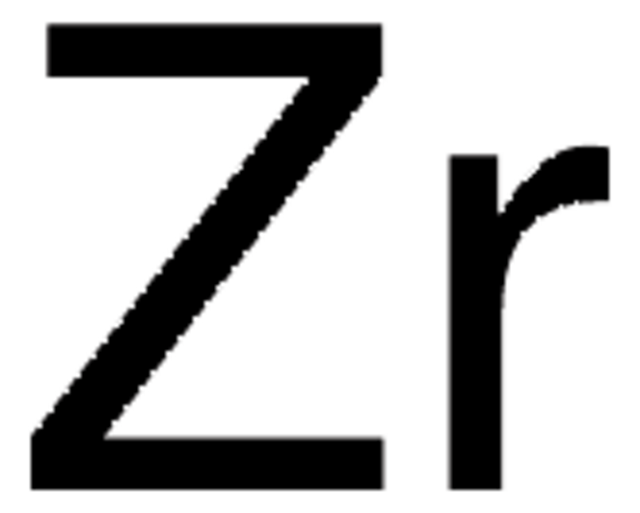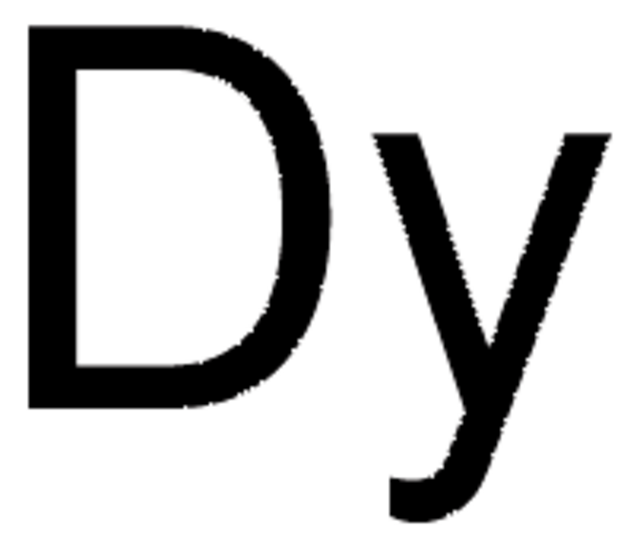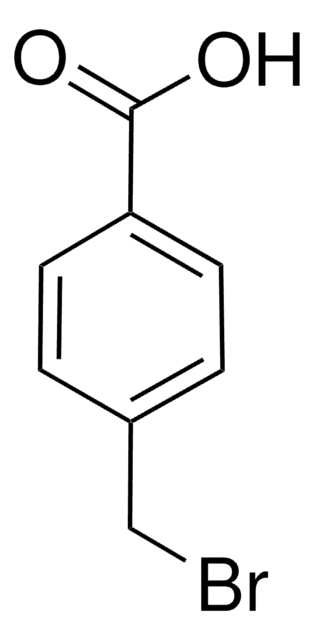693715
Terbium
foil, size 25 mm × 25 mm × 1 mm, 99.9% trace rare earth metals basis
Sinonimo/i:
Terbium-159
About This Item
Prodotti consigliati
Saggio
99.9% trace rare earth metals basis
Forma fisica
foil
Impiego in reazioni chimiche
reagent type: catalyst
core: terbium
Resistività
116 μΩ-cm, 20°C
Misura
25 mm × 25 mm × 1 mm
P. eboll.
3230 °C (lit.)
Punto di fusione
1356 °C (lit.)
Densità
8.234 g/mL at 25 °C (lit.)
Stringa SMILE
[Tb]
InChI
1S/Tb
GZCRRIHWUXGPOV-UHFFFAOYSA-N
Cerchi prodotti simili? Visita Guida al confronto tra prodotti
Applicazioni
Codice della classe di stoccaggio
11 - Combustible Solids
Classe di pericolosità dell'acqua (WGK)
WGK 3
Punto d’infiammabilità (°F)
Not applicable
Punto d’infiammabilità (°C)
Not applicable
Dispositivi di protezione individuale
Eyeshields, Gloves, type N95 (US)
Scegli una delle versioni più recenti:
Certificati d'analisi (COA)
Non trovi la versione di tuo interesse?
Se hai bisogno di una versione specifica, puoi cercare il certificato tramite il numero di lotto.
Possiedi già questo prodotto?
I documenti relativi ai prodotti acquistati recentemente sono disponibili nell’Archivio dei documenti.
Articoli
A significant limiting factor for wearable electronics and wireless sensors is the finite amount of energy that can be stored in on-board batteries.
The application of magnetism and magnetic materials pervades our modern civilization in the form of electrical power, communications and information storage.
Rechargeable solid-state batteries are becoming increasingly important due to wide-spread use in computers, portable electronics, and vehicular applications.
Il team dei nostri ricercatori vanta grande esperienza in tutte le aree della ricerca quali Life Science, scienza dei materiali, sintesi chimica, cromatografia, discipline analitiche, ecc..
Contatta l'Assistenza Tecnica.![[3aR-[2(3′aR*,8′aS*),3′aβ,8′aβ]]-(+)-2,2′-Methylenebis[3a,8a-dihydro-8H-indeno[1,2-d]oxazole] 98%](/deepweb/assets/sigmaaldrich/product/structures/134/031/294d2464-1571-4514-8e4c-c0cda1c1df7b/640/294d2464-1571-4514-8e4c-c0cda1c1df7b.png)





![(+)-1,2-Bis[(2S,5S)-2,5-dimethylphospholano]benzene kanata purity](/deepweb/assets/sigmaaldrich/product/structures/319/912/cec7b70f-bf7c-4a96-9f11-a73ae892e34c/640/cec7b70f-bf7c-4a96-9f11-a73ae892e34c.png)


![(RP)-1-[(R)-α-(Dimethylamino)-2-(diphenylphosphino)benzyl]-2-diphenylphosphinoferrocene optical purity ee: ≥99%](/deepweb/assets/sigmaaldrich/product/structures/361/819/e2566437-d2aa-4d81-8926-06a3497f90ce/640/e2566437-d2aa-4d81-8926-06a3497f90ce.png)